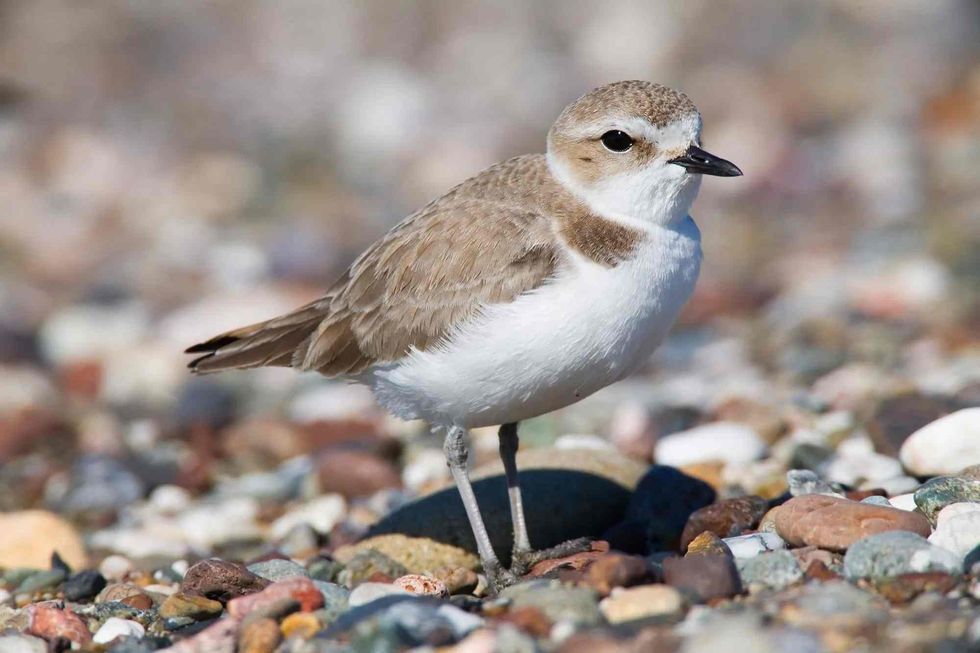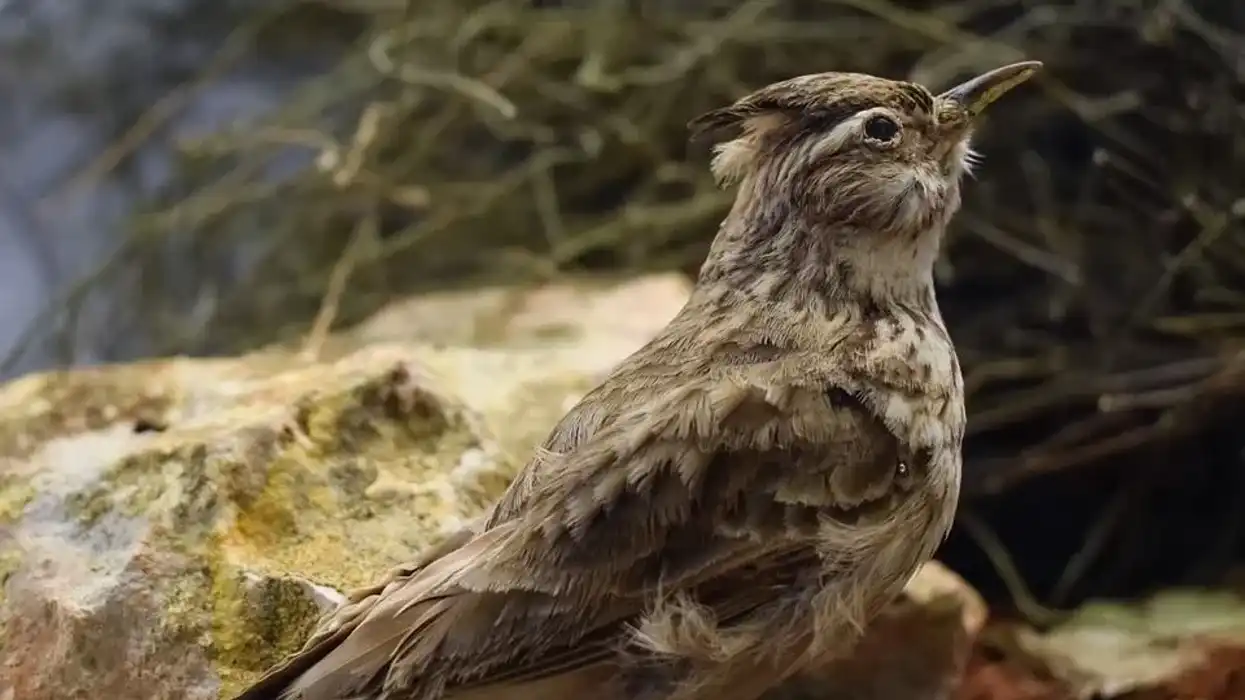Snowy plovers (family Charadriidae) are found scurrying on a beach and are found in Ecuador, Chile, and the southern and western United States. They have black and white plumage or pale brown plumage.
They are listed as Near Threatened birds and their population is decreasing. In some states, the western snowy plover is classed as an endangered species.
During the summer, adult snowy plovers develop a black spot on the back of the head before the crown and they also display a black collar around their breast region. Non-breeding adults are pale sandy brown and have pale brown collars.
Here are some of the most interesting facts about snowy plover nests and snowy plover nesting season. After reading these fascinating facts about snowy plover migration, do check our other articles on the snowy egret and the little egret as well.
Snowy Plover Interesting Facts
What type of animal is a snowy plover?
The western snowy plover (Charadrius nivosus) is a bird found near the Pacific Ocean in the United States, near the coastal regions of South Washington to Baja California in Mexico. These North American birds mostly prefer regions along the Pacific coast for their habitat.
What class of animal does a snowy plover belong to?
Snowy plovers are birds that migrate in the winter with other flocks of birds. Breeding and non-breeding adults of western snowy plovers can be easily distinguished based on their color and physical characteristics.
They belong to the family Charadriidae and can be found all year along the South Texas coast, the U.S. Pacific coast, and during winters along the Gulf Coast.
How many snowy plovers are there in the world?
The estimated breeding population of western snowy plovers is 31,000, from which 24,000 breeding pairs are found in the United States alone. The population of these species is constantly decreasing due to increased human activity on sandy beaches and coastal areas causing habitat loss and degradation of habitat.
Some migrate to the coast during winters while many groups living along the Pacific coast are permanent residents.
Where does a snowy plover live?
Western snowy plovers can be found along the coast of the Pacific Ocean. They usually can be found in sandy areas like the shires of a beach and coastal areas where vegetation is abundant. These birds prepare their nest in the sand along the beach.
What is a snowy plover's habitat?
The preferred habitat of a western snowy plover is living and nesting alongside a sandy beach and sandy flats. They are also found near coastal areas, barren peninsulas, rivers and salt pans, and the coastline of the Pacific Ocean.
Who do snowy plovers live with?
Snowy plovers are social and often flock with other species of birds found inhabiting and nesting along the shore. Even though they are solitary, they form flocks of 300 members occasionally and roost together.
How long does a snowy plover live?
The average lifespan of a western snowy plover is only three years. Due to their short lifespan and loss of habitat, their population and nesting have been decreasing and they have been listed as Near Threatened. The involvement of humans near sandy beaches and coastal regions is also considered to be the major reason why their population has collapsed.
How do they reproduce?
Snowy plovers reach sexual maturity when they are six months old.
This shorebird species has a polygamous mating system and both the males and the females will leave the chicks in their nest and try to find mates for another mating session.
Snowy plovers mainly breed once a year but can produce two or three broods of snowy plover eggs depending upon the availability of mates, as well as their nest, habitat, and climate.
After the chicks hatch in the nest, the females leave the males and find a new nest for breeding in with a different male.
What is their conservation status?
The conservation status of this shorebird is listed as Near Threatened and their population is decreasing due to various threats. Only 31,000 estimated breeding pairs of snowy plovers are living in the wild, making it a worrisome state and necessitating their conservation.
Snowy Plover Fun Facts
What do snowy plovers look like?

Breeding snowy plovers have black and white feathers with a black collar near the breast or neck region. Non-breeding snowy plovers have a sandy brown to deep brown upper body with white underparts. The collar of non-breeding snowy plovers is brown too.
How cute are they?
They are little waders found along the Pacific Ocean and the Gulf Coast. These are shorebirds that are often found alongside a beach and prefer sandy habitats. They are not so cute or appealing and are rarely spotted.
How do they communicate?
Like all birds, snowy plovers communicate through calls and body displays and are seen foraging on the shore in a flock occasionally. They also flock with other species of shorebirds and forage with them.
How big is a snowy plover?
The average weight of a snowy plover is 1.2-2 oz (31.2-56.7 g) and the average body length is 5.9-6.7 in (15-17 cm).
How fast can a snowy plover fly?
They fly at an average speed. They are often disturbed by humans and dogs while flocks of snowy plovers rest on the beach. They also fly when they are disturbed by a predator who wants to prey on their eggs.
How much does a snowy plover weigh?
The weight of a snowy plover ranges though it does not weigh more than 2 oz (56.7 g). The average weight of a snowy plover is 1.2-2 oz (31.2-56.7 g).
What are the male and female names of the species?
There are no distinct names for the male and females snowy plovers.
What would you call a baby snowy plover?
A baby snowy plover can be called a hatchling or nestling. When a snowy baby plover begins to fly it is called a fledgling. But, baby snowy plovers do not have different scientific names, hence their common name is western snowy plover baby or a snowy plover chick. Young chicks look like soft and fluffy cotton balls.
What do they eat?
Snowy plover babies are typically insectivores but also eat worms. Marine worms, flies, beetles, wasps, spiders, crustaceans, shrimps, algae, clams, juvenile crabs, mollusks, aquatic insects, and sandhoppers are all a part of the snowy plover diet.
Are they aggressive?
They are not aggressive but will protect their territory from other shorebirds. If a predator like a raven tries to threaten the snowy plover, it will flee from the sight leaving the eggs alone. They are social bird species that often get mixed with flocks of other birds.
Would they make a good pet?
No, snowy plovers would not make good pets as they cannot survive in an apartment habitat. They need open, coastal, or sandy areas where they can rest together in flocks and feed on marine worms and little crabs.
They also have a short lifespan which is why they must be left in the wild. Their population is currently a major concern and it is decreasing, which is also another reason to not keep them locked in a cage.
Did you know...
Snowy plovers mostly search through the sand to find worms or other insects on which they can feed. An estimated number of 2,600 snowy plovers can be found along the Pacific coast. They are also known as Kentish Plovers in many regions of the world.
Why was the snowy plover endangered?
The snowy plover was listed as Endangered due to habitat loss and degradation, mainly caused by excessive human activities along the coastal areas, as well as recreation and disturbances caused by a drone or a fast-moving bird or animal. The western snowy plovers are listed as a species of Special Concern by the Californian state.
When do snowy plovers nest?
Snowy plovers start nesting in early spring and continue until late fall. Both the males and the females may find different mates for brooding multiple times. The nests are built by scraping the sand and both parents incubate the egg. The male snowy plover warms the eggs during the night while the female provides them heat during the day.
Here at Kidadl, we have carefully created lots of interesting family-friendly animal facts for everyone to discover! Learn more about some other birds including the blue and yellow macaw and the scarlet macaw.
You can even occupy yourself at home by drawing one of our Snowy Plover coloring pages.










